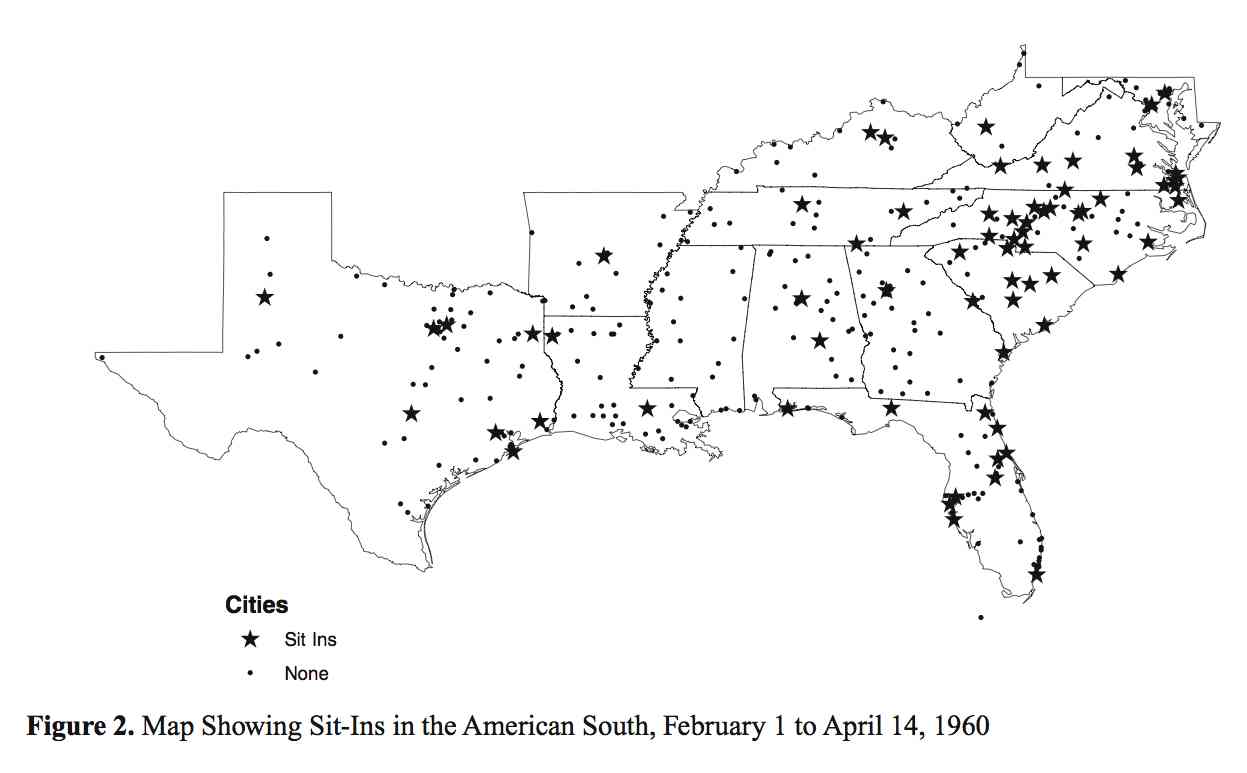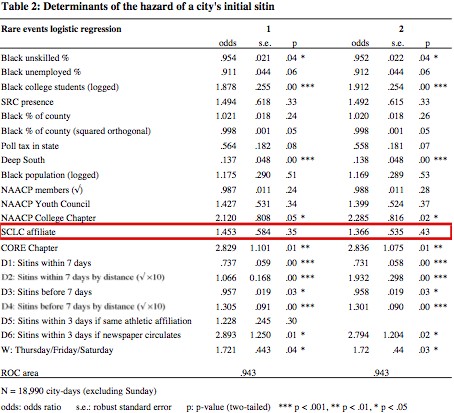 The wave of sit-ins that swept through the
American South in the spring of 1960 transformed the struggle for
racial equality. This
episode is widely cited in the literature on social movements, but the
debate
over its explanation remains unresolved—partly because previous
research has relied on case studies of a few large cities. We use
event-history
analysis to trace the diffusion of sit-ins throughout the South and to
compare cities where sit-ins occurred with the majority of cities where
they
did not. We assess the relative importance of three channels of
diffusion: movement
organizations, social networks, and news media. We find that movement
organizations
played an important role in orchestrating protest; what mattered was a
cadre of activists rather than mass membership. There is little
evidence that
social networks acted as a channel for diffusion between cities. By
contrast,
news media were crucial for conveying information about protest
elsewhere.
In addition, we demonstrate that sit-ins were most likely where there
were many college students, where the adult community had greater
resources
and autonomy, and where political opportunities were more favorable.
The wave of sit-ins that swept through the
American South in the spring of 1960 transformed the struggle for
racial equality. This
episode is widely cited in the literature on social movements, but the
debate
over its explanation remains unresolved—partly because previous
research has relied on case studies of a few large cities. We use
event-history
analysis to trace the diffusion of sit-ins throughout the South and to
compare cities where sit-ins occurred with the majority of cities where
they
did not. We assess the relative importance of three channels of
diffusion: movement
organizations, social networks, and news media. We find that movement
organizations
played an important role in orchestrating protest; what mattered was a
cadre of activists rather than mass membership. There is little
evidence that
social networks acted as a channel for diffusion between cities. By
contrast,
news media were crucial for conveying information about protest
elsewhere.
In addition, we demonstrate that sit-ins were most likely where there
were many college students, where the adult community had greater
resources
and autonomy, and where political opportunities were more favorable.
(Honourable mention under the award for best published article, American Sociological Association's Collective Behavior and Social Movements Section, 2007)
CORRECTION
 The variable for SCLC presence was based on a
list of affiliates apparently
dating from
February 3, 1960. On further scrutiny, we consider the second part of
this list to be an entirely separate document, from a later date. The
variable should be coded from the first part of the list (securely
dated February 3, 1960). The corrected variable makes little difference
to the results: the effect of SCLC is even smaller (before it was close
to the threshold of statistical significance).
The variable for SCLC presence was based on a
list of affiliates apparently
dating from
February 3, 1960. On further scrutiny, we consider the second part of
this list to be an entirely separate document, from a later date. The
variable should be coded from the first part of the list (securely
dated February 3, 1960). The corrected variable makes little difference
to the results: the effect of SCLC is even smaller (before it was close
to the threshold of statistical significance).
Michael Biggs, Department of Sociology, University of Oxford
